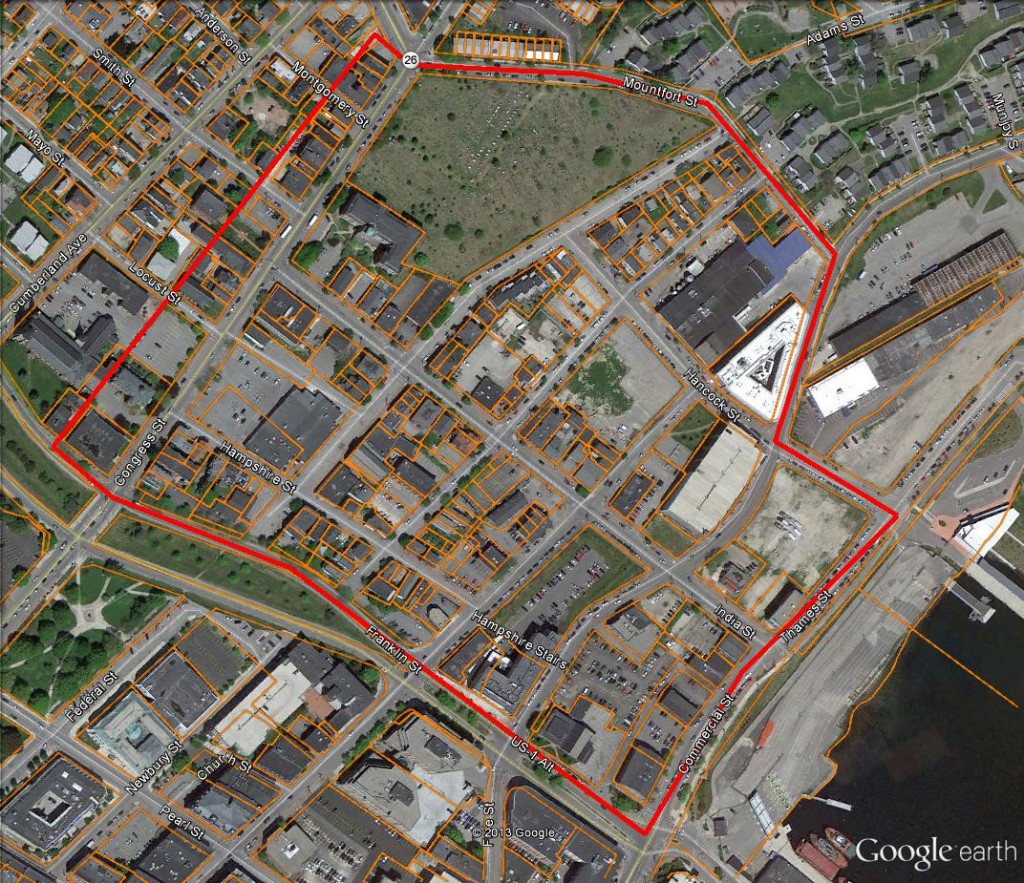One of Portland’s oldest neighborhoods officially received a historic designation Monday night and will become the first neighborhood in the city to test a new type of zoning code that focuses on how buildings look rather than how they are used.
The new rules for the India Street neighborhood were adopted by the Portland City Council in an 8-0 vote. It struggled, however, with some of the details, including a neighborhood plan and a so-called “form-based” code with subdistricts.
The vote formally folds the India Street Neighborhood Plan into the city’s Comprehensive Plan and adopts tools to implement the India Street plan – namely, the historic district and the form-based building code.
The council will review the effects of the new code in three to five years.
“I think what the city has come up with is a plan masterfully done,” said Hugh Nazor, an outspoken critic of several recent large development projects in Portland – such as the Bay House and Ocean Gateway Parking Garage – who helped initiate the planning process in 2011.
The form-based code sets maximum building heights of 50 feet along India Street as well as portions of Commercial, Middle and Congress streets. That’s a 15-foot reduction on Commercial Street and a 5-foot increase on India Street north of Middle Street.
The new code does not apply to any projects that already submitted a site plan or subdivision to city staff before the council vote.
Formerly known as King Street, India Street was the city’s first road and home to its first settlers. The neighborhood is generally defined by the area bounded Franklin, Congress, Mountfort and Commercial streets, which will be subject to the new form-based code.
Creating a historic district adds a layer of review for any building changes and new developments along India Street, starting at Middle Street and extending toward Congress Street, where the district branches out toward Franklin Street and Washington Avenue. It includes buildings along Congress Street, except for the Maine Medical Partners building and Rite Aid shopping plaza.
The council also designated the Abraham S. Levy Building, which is just outside the newly created district at 78-88 Middle St., as a local landmark. According to Greater Portland Landmarks, the block was designed by renowned architects John Calvin Stevens and John Howard Stevens and used to house shops owned by Italian and Jewish immigrants.
“It really is part and parcel with that neighborhood,” said Deb Andrews, the city’s historic preservation manager.
Over the summer, city officials scaled back a more ambitious historic district that included much of the India Street neighborhood after getting pushback from some property owners.
Greater Portland Landmarks said the buildings, and the historic district, should be preserved because India Street is the only neighborhood in the city that was a gateway and landing area for all types of immigrants who came to Portland by sea, including African-Americans, Irish, Italians and Jewish working-class people.
Public comments were evenly divided for and against the proposal, with property owners concerned about additional costs and preservationists saying those fears were misplaced and that protecting history would increase property values and economic development.
Planning and Urban Development Director Jeff Levine said he didn’t know the exact financial impact of a historic designation. Generally, however, he said property values increase, as do costs of maintaining those buildings.
Andrews said individual property owners can ask the city to remove their property, especially if the requirements present an economic hardship.
“I personally cannot afford to take part in that measure,” said Newbury Street resident Lindsay Clarke, a schoolteacher.
“That fear is misplaced,” said Peaks Island resident Arthur Fink, who works in the area. “And I hope you (councilors) and the people who expressed that fear will be confident that a historic district will help us all develop a neighborhood we’ll be proud of.”
Send questions/comments to the editors.





Comments are no longer available on this story